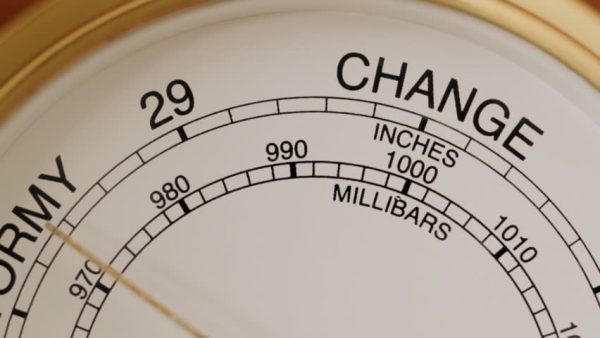The Business Cycle: Navigating in All Kinds of Weather
By Leon J. Owens

Every enterprise is forced to deal with the business cycles of the financial markets, consumer issues, and the swings of supply and demand.
No matter what business you are in, you’re always at some point in a business cycle of highs, lows, and transitions. Your course is rarely a straight line. To move forward, you’ll be forced to tack to starboard or port as conditions change.
Whether you provide products or services, your business will eventually be forced to navigate through stormy weather. Your odds of surviving those storms are much greater if you know what to expect and how to react.
These are the obvious business cycles and weather patterns any business should anticipate to stay afloat:
- Calm seas, but not enough wind. Everything is quiet, and you’re moving along, but not at the pace you need to stay on a straight course. Solutions to this problem are unclear. Is the wind changing direction?
- A storm hits suddenly and a serious crisis arrives. Markets collapse, technology evolves, and regulations arise. Your direction is unclear as turbulence is everywhere. You hang on and work hard to stay afloat.
- The clouds lift, the sun shines, the wind is at your back. Customers are everywhere and they all want your goods or services now. You take on more staff and debt, and everyone pulls hard on the sails. The ship picks up speed and you’re soon at full capacity and having trouble keeping up with demand. It feels good!

The wind at your back…it feels great! - Other boats are in the water now, poaching your customers, edging you off course. Competition is everywhere and you’re forced to reduce costs and lower your pricing…and eventually your profit margin. You’re in danger of becoming a “comparable” and being leveraged down to the lowest possible price.
- Lo and behold…the business cycle tide changes and the current is running against you. The sailing isn’t so smooth now as clients become scarce, competition is feeding on each other, your accounts receivable become difficult to collect, and managing your accounts payable becomes a serious challenge.

No surprise…the weather changes once again. You might change course, study your charts, shift expectations and objectives. Within another year or even less, the wind is at your back again and the cycles continue…
So how do you avoid running aground?
The survival of your business depends upon your ability to anticipate business cycle changes and to react strategically. An experienced sailor brings enough supplies for the voyage, just as a good business leader adheres to certain fundamentals:
- Anticipate conditions before setting sail. The weather is always best when we shove off from the dock, but we know it’s going to change at some point. You need to be ready for the worst case scenario; what changes will your business make when things go sideways?
- Monitor your resources carefully. A sailor doesn’t drink all his water on the first day, and a business can’t commit to overhead costs beyond realistic revenue projections. Adjust when things are going well; taking on more obligations just before the weather changes can be disastrous.
- Don’t put up more sails than you can handle. Knowing the limits of your crew and your business “ship” is essential. Allowing your business growth to exceed your staffing or delivery capacity—or staffing beyond your actual needs—can make the voyage difficult.
- Maintain solid reserves. There’s nothing better than staying power. Keep cash reserves on hand so that your business can weather the next series of storms…because they will
- Don’t think it can’t happen to you. Some of the best business minds and trans-oceanic navigators have ignored the signs of “changing weather”…and they’ve paid the price. When the weather is good, when business is good, full speed ahead! But when a storm is coming, head for a safe harbor and conserve your resources. Don’t fool yourself. Plowing ahead through difficult weather—trying to force revenue growth during a business downturn—is likely to produce negative results. Better to take shelter and wait for things to improve. This is the best time to learn.

Just remember, the weather is always changing. So is the business environment.
In summary…Running a business properly isn’t just “another day at the beach.” You’ll often need to anticipate changes and make difficult choices. If you keep an eye on the horizon and have the courage to make those choices, your business will stay on course and continue moving toward your goal: profit.
When you’re faced with those inevitably difficult conditions, you’ll want Leon J. Owens on board. He has all the right navigational skills to help you succeed in the most troubled waters.